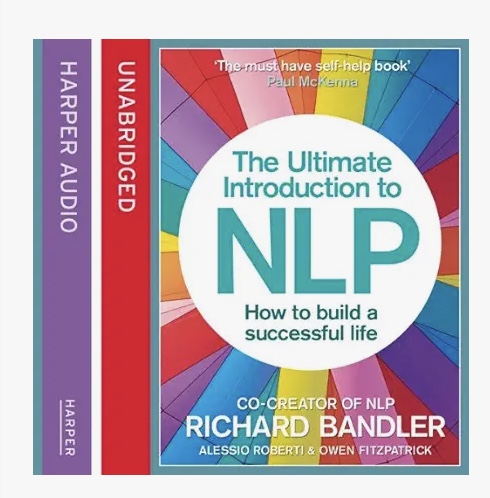How NLP Helped Me Heal from Grief: Coaching Tools for Emotional Resilience
NLP Isn’t Just Theory—It’s How I Kept BreathingAfter my sister died, I wasn’t looking for tools. I just wanted the pain to stop. But somewhere in that fog, I picked up The Ultimate Introduction to NLP. I didn’t expect it to speak to me, let alone help me.
But it did.
Co-written by Richard Bandler (one of the founders of NLP), the book surprised me. I didn’t know he came from math and computer science before turning to psychology. Or that NLP was born in the 1970s by modeling therapists like Virginia Satir and Milton Erickson—people who understood human behavior like it was music.
It made me realize: NLP isn’t a trick. It’s a translation system for change.
The Practice That Broke Me Open (In a Good Way)
In Chapter 4, there’s a visualization exercise: Take a painful memory, imagine it like a movie. Shrink it. Drain the color. Move it into the distance.
The idea isn’t denial—it’s agency. You decide what size your memories take up.
But I’ll be honest: some movies don’t shrink.
My sister’s illness, her death, and everything after—it’s still playing in IMAX. That movie wants to be seen. The hospital visits. The caregiving. The legal forms. The grief. I can’t push that reel into the background.
And maybe that’s okay.
Because NLP also taught me this: You don’t have to shrink everything. You just start with what you can.
Like that morning when I caught myself spiraling in “shoulds.” I stood in the doorway. The light hit my face. I took a breath. Said my chant. And gave myself permission: It’s okay to rest. It’s okay to just be.
3 NLP Tools That Helped Me (and My Clients)
I use these techniques often—with clients navigating grief, career changes, and big identity shifts. And sometimes I use them just to get through the day.
1. Anchoring
This one’s about creating a felt sense of calm on demand. For me, it’s a breath I take before sessions or when the grief gets loud. It brings me back.
2. Reframing
I used to see certain conversations as confrontations. Now, I see some of them as invitations. Reframing helps me stay grounded—and curious.
3. Well-Formed Outcomes
This one’s subtle but powerful. It shifts me from “I don’t know what I want” to: What would I like instead? That’s been a game-changer in both healing and coaching.
Coaching Isn’t About Erasing Your Story
It’s about finding space inside it to breathe, choose, reframe—or just sit quietly with what’s true. That’s what NLP helped me see. You’re not broken. You’re not stuck. You’re just here. And there are tools to meet you here.
If You’re Ready to Explore These Tools
I work with people moving through grief, reinvention, and life transitions. If you’re looking for a coach who gets it—who knows what it’s like to break down and rebuild—I’m here.
→ Learn more about how I coach
→ Listen to my podcast, A Journalist’s Guide to AI—it’s where I explore the future of work, storytelling, and staying human in all of it.
FAQ: NLP for Grief and Emotional Resilience
Q: Can NLP really help with grief?
Yes. It’s not therapy—but it’s powerful. NLP gives you tools to shift your state, your story, or your next step—even in the middle of pain.
Q: What’s an easy NLP technique to try?
Start with anchoring. Find a breath or a hand gesture that calms you. Practice using it when things feel okay, so it’s ready when they don’t.


Leave a Reply